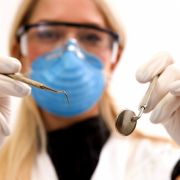Objectives:
Participant will be able to:
1- Define, identify, and distinguish color, light, light sources, electromagnetic and visible spectra
2- Understand light and color specifications (temperature, spectral energy) and how they are applied in dental clinic/unit
3- Understand and explain how color is produced, color dimensions (Hue, Chroma, and Value), and their application in the dental field
4- List and explain different color measurement systems and devices and their indications of use
5- Understand how color is perceived by the human eye and what factors affect color perception (light source, observer, and object charachterstics)
6- Understand factors affecting shade selection, different shade selection guides, and guidelines for shade selection
7- Recognize all optical properties (translucency, transparency, opalescence, opacity and fluorescence) that would eventually affect the outcome.
8- Analyze and map the optical properties of the tooth before composite restoration.
9- Select proper composite material and shade based on the outcome analysis of the optical mapping of the tooth intended to be restored.
Understand the different critical issues that need to be considered when restoring different classes of cavity (class III, IV, V), Diastema, Anterior build up to improve smile.
Go to Site

